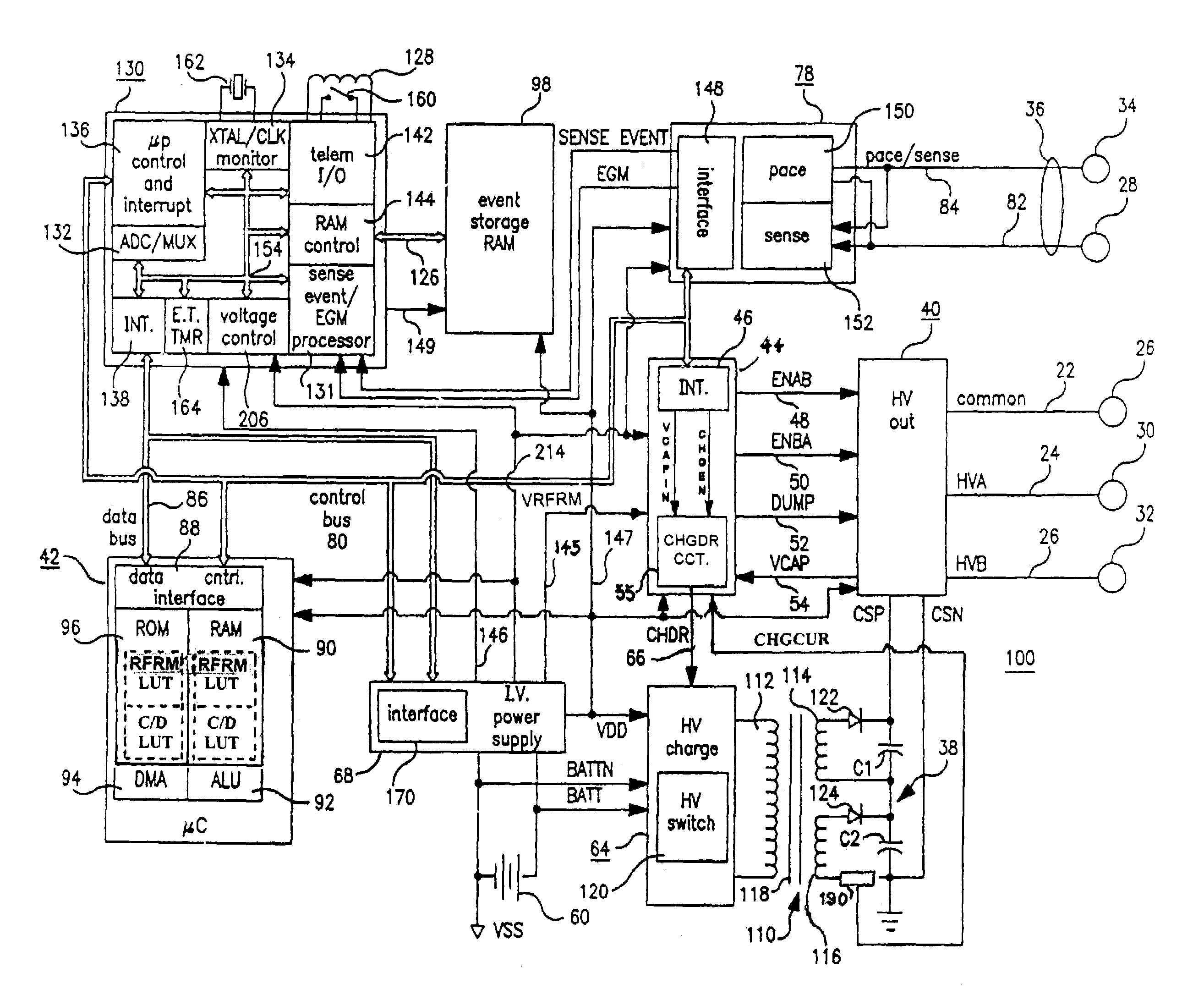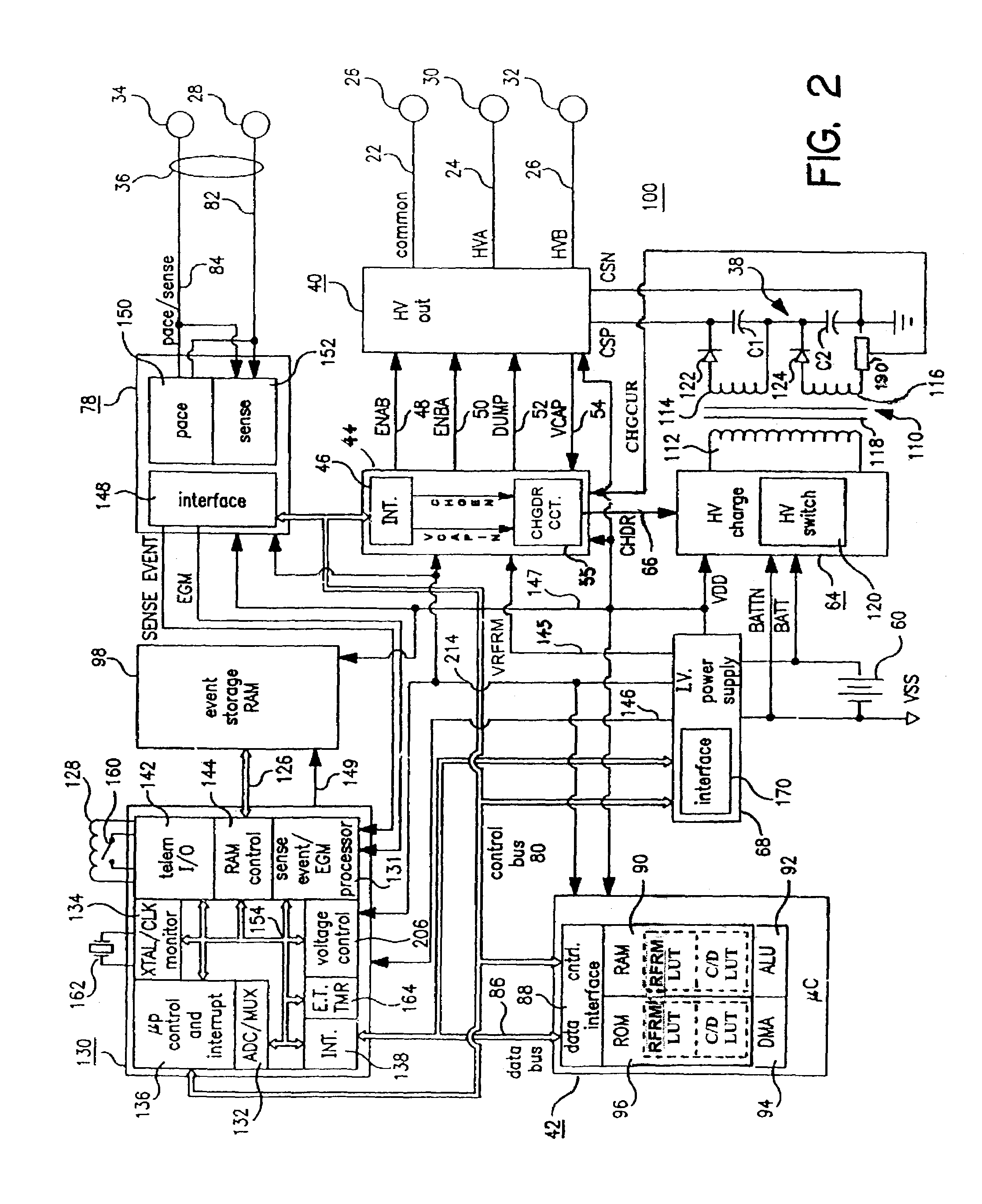Methods and apparatus for reforming high-voltage electrolytic capacitors
a high-voltage electrolytic capacitor and oxide reformation technology, which is applied in electrotherapy, heart defibrillators, therapy, etc., can solve the problems of increasing the resistance affecting and affecting the efficiency so as to improve the reformation rate of the deformed oxide layer, reduce the resistance power loss, and slow the charge rate of the hv output capacitor
- Summary
- Abstract
- Description
- Claims
- Application Information
AI Technical Summary
Benefits of technology
Problems solved by technology
Method used
Image
Examples
Embodiment Construction
[0023]In the following detailed description, references are made to illustrative embodiments of methods and apparatus for carrying out the invention. It is understood that other embodiments can be utilized without departing from the scope of the invention. Preferred methods and apparatus are described for reforming ICD capacitors in a fashion that reduces subsequent degradation of the ICD capacitor oxide and minimizes the energy expenditure and drain on the ICD high voltage batteries.
[0024]Such ICD IPGs typically are formed having a housing that is hermetically sealed and, therefore, is impervious to body fluids, and a connector header for making electrical and mechanical connection with one or more leads bearing pacing, sensing and C / D electrodes adapted to be located in or around selected chambers of the heart. The housing is formed of a suitable, body-compatible material approved for medical use, such as titanium and is shaped physiologically so as to avoid sharp edges that might...
PUM
 Login to View More
Login to View More Abstract
Description
Claims
Application Information
 Login to View More
Login to View More - R&D
- Intellectual Property
- Life Sciences
- Materials
- Tech Scout
- Unparalleled Data Quality
- Higher Quality Content
- 60% Fewer Hallucinations
Browse by: Latest US Patents, China's latest patents, Technical Efficacy Thesaurus, Application Domain, Technology Topic, Popular Technical Reports.
© 2025 PatSnap. All rights reserved.Legal|Privacy policy|Modern Slavery Act Transparency Statement|Sitemap|About US| Contact US: help@patsnap.com



